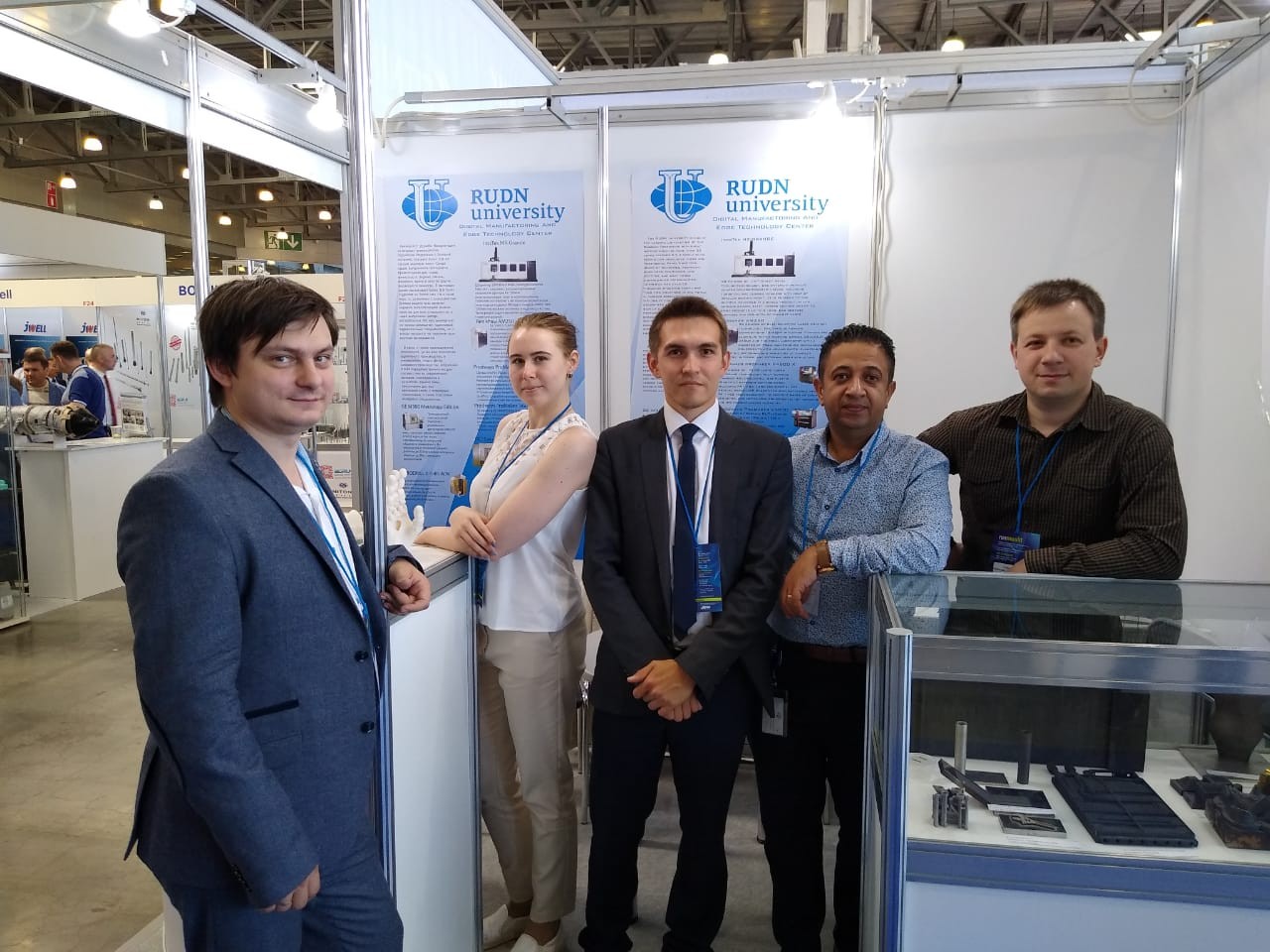On June 18-20, the Center for Additive Technologies of the Institute of Innovative Engineering Technologies of RUDN University took part in the international production exhibition "Rosmould"
 Visitors of the exhibition got acquainted with the direct laser growing method (3D printing) with metal using products manufactured on the InssTekMX-Grande, BeAM Modulo 250 and Renishaw AM250 machines as an example. In addition, we obtained information about diamond-like DLC coatings using the presented field samples as an example.
Visitors of the exhibition got acquainted with the direct laser growing method (3D printing) with metal using products manufactured on the InssTekMX-Grande, BeAM Modulo 250 and Renishaw AM250 machines as an example. In addition, we obtained information about diamond-like DLC coatings using the presented field samples as an example.
Engineers of the Center for Additive Nechnologies Nikolai Sedykh and Andrey Alekseev also made presentations at the conference on the topics “Biocompatible wear-resistant coatings based on carbon” and “DMT restoration of parts using the InssTek MX-Grande installation”. Andrei Alekseev's speech was about the successful industrial application of additive technologies for the restoration of worn turbine blades of gas pumping units. The recovery technology, the equipment used were described and the results of the research and testing were presented.
Matilda Pavlovna Mityaeva was born in 1925. In November 1942, she volunteered for frontline duty. She participated in the Great Patriotic War from November 1942 to June 1945 as part of the 53rd Infantry Division of the 475th Infantry Regiment. She was wounded twice.
The team led by Sergey Zyryanov, Head of the Department of General and Clinical Pharmacology, became the winner of the All-Russian competition of scientific projects "Technologies for Human Health".
RUDN University constantly adapts to the changes of the modern world and responds to challenges flexibly. This allows us to keep the standard of a world-class research university. The sphere of science is no exception. Peter Dokukin, Head of the Research Division, presented the updated R&D Programme at the meeting of the RUDN University Academic Council.
Matilda Pavlovna Mityaeva was born in 1925. In November 1942, she volunteered for frontline duty. She participated in the Great Patriotic War from November 1942 to June 1945 as part of the 53rd Infantry Division of the 475th Infantry Regiment. She was wounded twice.
The team led by Sergey Zyryanov, Head of the Department of General and Clinical Pharmacology, became the winner of the All-Russian competition of scientific projects "Technologies for Human Health".
RUDN University constantly adapts to the changes of the modern world and responds to challenges flexibly. This allows us to keep the standard of a world-class research university. The sphere of science is no exception. Peter Dokukin, Head of the Research Division, presented the updated R&D Programme at the meeting of the RUDN University Academic Council.